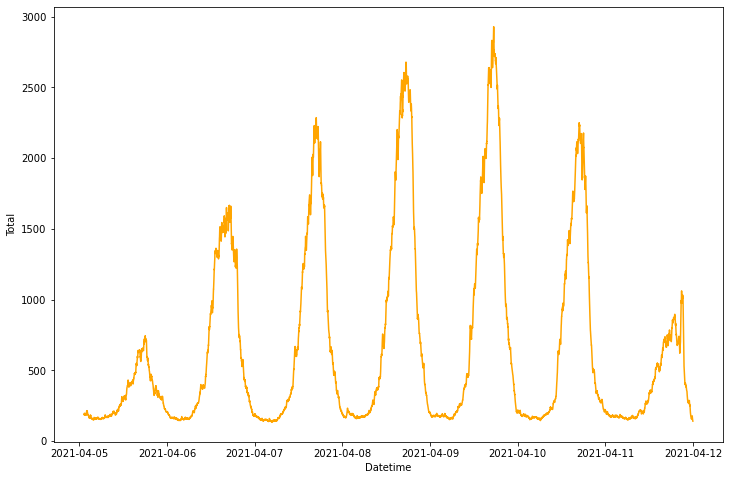Home / Case Studies / Pedestrians Forecast
- NMachine Learning Forecasting
AI Forecast of Pedestrian Traffic – Macq Engineering
Very interesting app ! Good Job ! Dedicated PM is good to follow all the project
Aim of the Project
● Create a forecast ML model
● Develop a web service & API for the ML model integration and usage
Results Achieved
● Forecast timeline: for 48 hours
● Data pre- & post-processing with interpolation and extrapolation
Main Technologies
● For ML: TensorFlow, Keras, Pandas, NumPy, Python.
● For Backend: Flask, Python.
● For Environment: Docker.
The development was made from scratch using historical data from a set of special WiFi sensors that are used to count pedestrians via counting of WiFi devices with further data extrapolation, which is made inside the system. The historical data range is about 12 months.
Model Features
The forecast model is unique. It also considers such features as the impact of weather conditions, days of the week and holidays, and COVID-19 lockdowns. The impact of the features is shown in the following table:
|
Group of Features |
Impact on Metric |
Note |
|
Temporal or chronological features. |
3% |
Positive impact. |
|
Weather (synoptic) features. |
10% |
Positive impact. |
|
COVID-19 pandemic features. |
Up to 83% (for lockdown periods) |
Positive impact. |
The forecast model has the following inputs and outputs:
|
Model Inputs |
Model Outputs |
|
Input #1: historical crowd-counts data for the previous 12 hours (720 minutes) with the 1-minute step. Input #2: chronological (weather, COVID restriction, holidays) features for each minute of the next 2 days (2880 minutes). Input #3: daily aggregated historical pedestrians-counts data for the previous 2 weeks (14 days). |
Count output: returns the number of the pedestrians-counts peaks for the next 48 hours. Position output: returns the exact positions of the pedestrians-counts peaks for the next 48 hours. Value output: return the exact values of the crowd-counts peaks for the next 48 hours. |
What Else AI Solution Features
● The model provides forecasts every 60 sec. (processing time is ~2 sec. only!).
● The model can be easily updated with the new data to improve the forecast.
● Webservice works in a safe and secure Docker-based environment.
● The system does not use any personal data.

Main Sources of Benefits
● The solution can help in the planning of social activities, security, and health measures for municipal (state and private) organizations. It will help to improve mobility using effective organizational arrangements due to available forecast data.
● The AI processing time is quite fast (~2 sec.). The forecast update period is 60 sec. It means the solution can fastly react to the input conditions changes and provide actual data.
● The developed web-service API can be used for 3rd-parties integration
